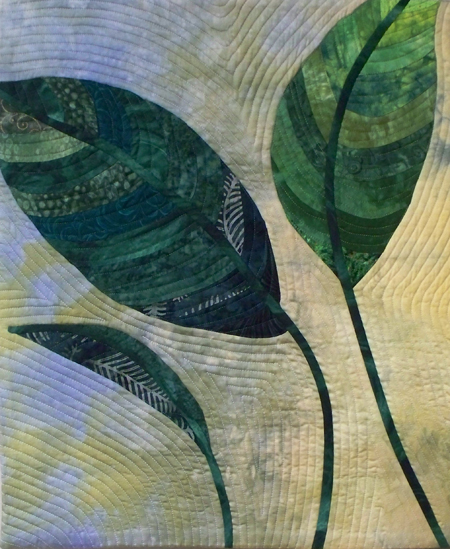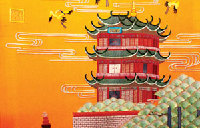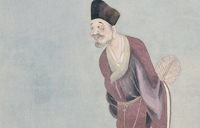
 'Taken 2' grabs movie box office crown
'Taken 2' grabs movie box office crown
 Rihanna's 'Diamonds' tops UK pop chart
Rihanna's 'Diamonds' tops UK pop chart
 Fans get look at vintage Rolling Stones
Fans get look at vintage Rolling Stones
 Celebrities attend Power of Women event
Celebrities attend Power of Women event
 Ang Lee breaks 'every rule' to make unlikely new Life of Pi film
Ang Lee breaks 'every rule' to make unlikely new Life of Pi film
 Rihanna almost thrown out of nightclub
Rihanna almost thrown out of nightclub
 'Dark Knight' wins weekend box office
'Dark Knight' wins weekend box office
 'Total Recall' stars gather in Beverly Hills
'Total Recall' stars gather in Beverly Hills
Stitches in time
Updated: 2013-04-07 14:24
By Mike Peters (China Daily)
|
||||||||
 |
|
Finished quilts that Ginn uses to show her different stitching techniques include Leaf Study. Provided to China Daily |
"I use cotton, organza, silk, anything I can find!" she says, holding up a pillow-sized quilt block for demonstration. "See here I've added this flossy fiber we call 'angel hair', and here some painted cellophane to represent water, which I've heated to make crinkly."
Designs come to her quickly, she says, but with the cutting and sewing involved, many of her quilts take more than a year to complete. "That's partly because like most quilters, I'm working on three or four at once. My Japanese Lanterns quilt, for example, was made entirely of 1-1/2 inch strips, in a complicated arrangement of colors. I'd work on that for several days, but then need a break and I'd go do something less intense."
For Ginn, a big part of her hobby's charm is the social circle it provides.
"The quilt guild in our town is a big and active one," she says of Hattiesburg, a community of 46,000 people. "We do a lot of quilts for children, and give them away for charity sales. They are simpler and fun, a nice diversion."
There are also big shows - in Paducah, Kentucky, home of the National Quilt Museum, and in Houston, where quilters take over the entire convention center in that Texas city for a week.
There can be $10,000 for the winning quilts in shows like that, she says. The jury process to get into those shows is very competitive "it's a win just to get in", says Ginn.
"Everyone is an artist to some degree, but they need to discover that in themselves," she says.
Contact the writer at michaelpeters@chinadaily.com.cn.
|
|
|
| Stitches from time | Stitches of reality |
Most Viewed
Editor's Picks

|

|

|

|

|

|
Today's Top News
Boston bombing suspect reported cornered on boat
7.0-magnitude quake hits Sichuan
Cross-talk artist helps to spread the word
'Green' awareness levels drop in Beijing
Palace Museum spruces up
First couple on Time's list of most influential
H7N9 flu transmission studied
Trading channels 'need to broaden'
US Weekly

|

|










